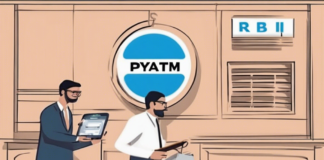Minimally invasive spine surgery is preferred to conventional open surgery for some patients who need spine surgery for diseases affecting the neck, spine, and back. This technique requires just minor cuts; thus, patients endure fewer complications, less blood loss, tissue damage, and discomfort. Moreover, patients recover considerably faster than those who undergo open spine surgery. However, because minimally invasive spine surgery is not a one-size-fits-all, Dr. Stepan Kasimian will work with you to determine the best care plan. Here are seven common reasons your specialist might suggest minimally invasive spine surgery Glendale.
1) Degenerative Disc Disease
Disc degeneration damages the intervertebral discs of the spine, typically the lumbar and cervical (neck). Although degenerative disc disease is more prevalent in older persons, younger individuals may develop it. Usually, age-related modifications at the cellular level cause discs to deteriorate, which could result in a ruptured, bulging, or herniated disc.
2) Herniated Disc
A herniated disc is also known as a ruptured or slipped disc. A disc herniates once the intervertebral disc’s nucleus pulposus (inner gel-like material) bursts through the disc’s tough outer tire-like shell (annulus fibrosus). The disc’s interior might spread and push on spinal nerves, resulting in pain and inflammation.
3) Sciatica
Sciatica is a collection of symptoms that can arise if the sciatic nerve is squeezed. The sciatic nerve is the body’s longest nerve. This nerve extends from the lower back through the buttock, down the rear of your thigh, and sometimes under the knee to the foot. Sciatica often affects one side of your body and creates discomfort under the knee. Discomfort is sometimes associated with tingling and numbness. Some individuals describe the discomfort as ‘searing’ or ‘electric.’
4) Scoliosis, Spinal Abnormalities
Scoliosis and other forms of spinal deformity are distinguished by aberrant spinal curves that vary in shape and size. The normal curvature of the spine, known as kyphosis and lordosis, occurs at distinct spinal areas or levels. However, scoliosis or severe kyphotic curves are aberrant forms of spine curvatures that could negatively impact spinal alignment, flexibility, and balance.
5) Spinal Stenosis
Spinal stenosis is constricting one or more nerve pathways or the spinal canal. This disorder commonly affects the lower back (lumbar) or neck (cervical) region. Elderly persons are more likely to develop spinal stenosis once a bone spur presses on the neighboring nerves. Typical warning signs include tingling feelings, weakness, pain, and numbness.
6) Spondylolisthesis
Once one vertebral body slips forward over another, spondylolisthesis occurs. The degree of the ‘slip’ is assessed from the least to the most severe. Spondylolisthesis often affects the lumbar spine and could be progressive or stable.
7) Vertebral Compression Fracture
Compression fractures of the vertebrae are prevalent forms of spinal fractures caused by osteoporosis or trauma. The most prominent sign of a VCF is intense, abrupt pain. Balloon kyphoplasty and vertebroplasty are two minimally invasive therapies for vertebral compression fractures.
Minimally invasive spine surgery provides numerous advantages over traditional open surgery. If you have any of these conditions, you may be eligible for the procedure, but not until a consultation with a surgical specialist will you be certain. At HAAS Spine & Orthopaedics, Dr. Stepan Kasimian will examine your concerns and tailor therapy to address the underlying cause of your condition. Call the Upland, Glendale, and Santa Ana, CA offices or request online today.






